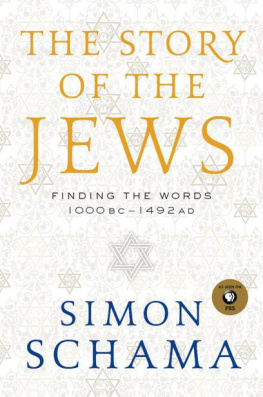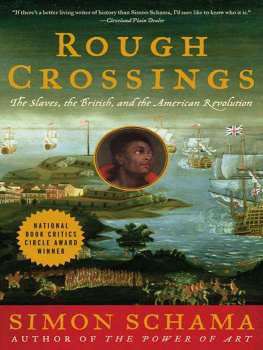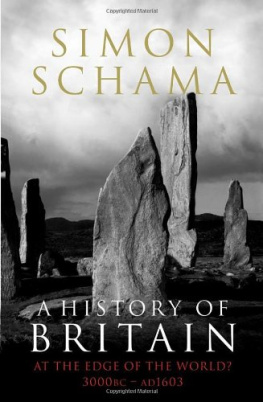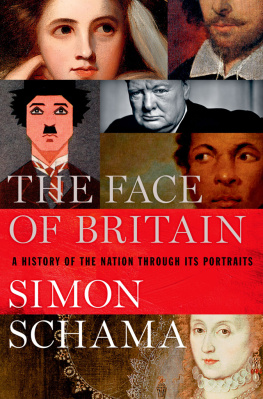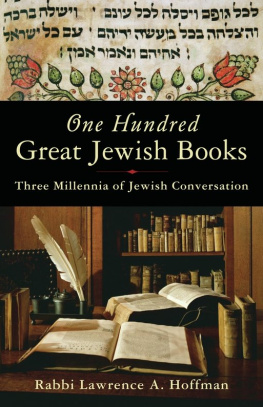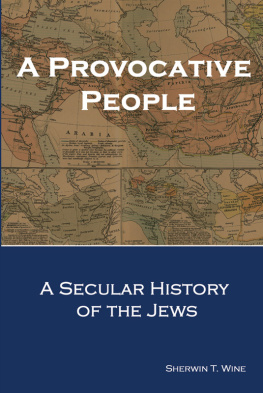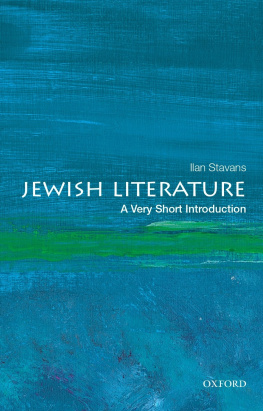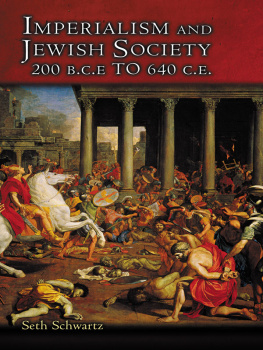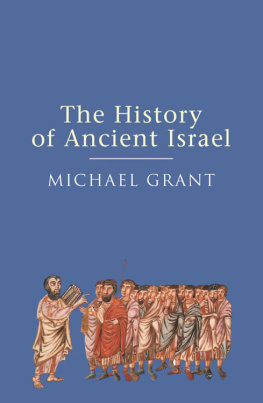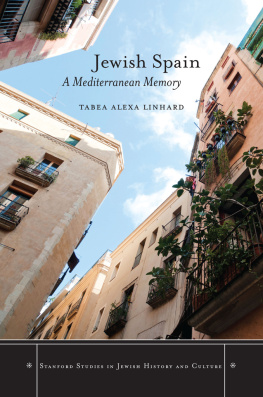For Chaya and Avraham Osea in loving memory
All the rivers run into the sea; yet the sea is not full; unto the place from whence the rivers come, thither they return again.
Ecclesiastes 1:7
Contents
The streets of Elephantine, courtesy of Oxford Film and Television Ltd
Khirbet Qeiyafa Tim Kirby
Silver benediction amulet, courtesy of Israel Museum, Jerusalem/The Bridgeman Art Library
Stone shrine from Khirbet Qeiyafa Jim Hollander/epa/Corbis
Siloam inscription Tim Kirby
Asherah statuettes akg-images/Erich Lessing
Members of the Sinai survey, courtesy of Palestine Exploration Fund, London, UK/The Bridgeman Art Library
Plain of Er Rahah from the cleft on Ras Sufsafeh, courtesy of Palestine Exploration Fund, London, UK/The Bridgeman Art Library
Limestone ossuary with architectural decoration, courtesy of Israel Museum, Jerusalem/The Bridgeman Art Library
Ossuary belonging to high priest Caiaphas Tim Kirby
Iraq al-Amir akg-images/Gerard Degeorge
Ceramic candelabrum courtesy of Israel Museum, Jerusalem/Gift of Morris and Helen Nozatte through the Morris Nozatte Family Foundation/The Bridgeman Art Library
Hasmonean pruta , courtesy of Israel Museum, Jerusalem/The Bridgeman Art Library
Iraq al-Amir lion and cub Tim Kirby
Tomb of Zechariah akg-images/Gerard Degeorge
Arch of Titus Tim Kirby
Fallen masonry from the Jerusalem Temple Tim Kirby
Wall paintings from Dura-Europos synagogue, courtesy of National Museum of Damascus, Syria/Photos Zev Radovan/The Bridgeman Art Library
Sepphoris mosaics depicting the months of Tevet and Nisan, courtesy of Private Collection/Photos Zev Radovan/The Bridgeman Art Library
Sepphoris mosaic depicting a menorah akg-images/Bible Land Pictures
Painting of palm grove from Vigna Randanini Araldo De Luca
Mosaic of a dolphin, courtesy of Brooklyn Museum of Art, New York, USA/Museum Collection Fund/The Bridgeman Art Library
Childs exercise book, T-S K5.13, reproduced permission of the Syndics of Cambridge University Library
Abu Zikri Kohen cheque, T-S Arabic 30.184, reproduced permission of the Syndics of Cambridge University Library
Jew of Bourges stained glass window Sonia Halliday Photographs Cartoon of Aaron The National Archives
Chronica Roffense, courtesy of British Library, London, UK/The Bridgeman Art Library
Mishneh Torah of Maimonides, courtesy of Library of the Hungarian Academy of Sciences, Budapest/The Bridgeman Art Library Birds Head Haggadah, courtesy of The Israel Museum, Jerusalem/The Bridgeman Art Library
Title page from Moreh Neruchim by Maimonides, courtesy of The Art Archive/Bodleian Library Oxford
Dedicational inscription in El Transito Synagogue akg-images/Bible Land Pictures
Mudejar stucco decoration in the El Transito Synagogue akgimages/Bible Land Pictures
Santa Maria la Blanca Synagogue akg-images/Album/Oronoz
Carpet page from the Kennicott Bible, courtesy of The Art Archive/Bodleian Library Oxford
Barcelona Haggadah, courtesy of The Art Archive/British Library
The Cervera Bible, courtesy of Instituto da Biblioteca Nacional, Lisbon, Portugal/Giraudon/The Bridgeman Art Library
We were slaves in Egypt illustration The British Library Board (Add. 26957 f.39v)
This is the Bread of Affliction illustration The British Library Board (Add. 26957 f.39)
Jonah and the Great Fish illustration, Kennicott Bible, courtesy of The Art Archive/Bodleian Library Oxford
Menorah illustration, Kennicott Bible, courtesy of The Art Archive/Bodleian Library Oxford
The colophon page of the Kennicott Bible, courtesy of The Art Archive/Bodleian Library Oxford
Hebrew micrography The British Library Board (Add. 15282 f.45v)
Catalan Atlas, courtesy of The Art Archive/Bibliothque Nationale Paris
The Bible Lands 10th century BCE to 70 CE
Synagogues in late antiquity
Jewish towns in Arabia
The Jewish world revealed by the Cairo Geniza
Jews in Christian Iberia, c .1390
Massacres and expulsions in medieval Christendom
I cant say I wasnt warned. My sonne , the wintry-wise preacher of Ecclesiastes admonishes, of making many bookes there is no end and much studie is a wearinesse of the flesh . Anyone venturing into Jewish history has to be dauntingly aware of the immense mountain ranges of multi-volume scholarship towering behind him. Nonetheless, forty years ago, I agreed to complete a history of the Jews left unfinished at the death of one of those scholars, Cecil Roth, whose entire life had been devoted to that subject. At the time, I was at work on a book on the Rothschilds and Palestine. Together with a friend and colleague at Cambridge University, Nicholas de Lange, a scholar of Jewish philosophy in late antiquity and Amos Ozs translator, I had been educating myself at the students expense in post-biblical history through an informal seminar held in my rooms at Christs College. For a couple of hours after supper, the sages, false messiahs, poets and rabble-rousers came into our little company as we cracked walnuts and jokes, and drank wine and the brimming cup of Jewish words.
But Nicholas and I had brought the gatherings together for a serious reason. Outside of rabbinics there seemed to us no other place for history or literature students to meet and discuss Jewish culture, and that itself was a sign of how separate the subject had become from the academic mainstream. By the time the invitation to complete the Roth volume came along, there were other pressing reasons to want to make a connection between the history of the Jews and everyone else. It was 1973. The Yom Kippur ArabIsraeli War had just taken place. Despite another Israeli military success, the mood was as sober as it had been euphoric seven years earlier, after the Six Day War. This last conflict had been a close-run thing, especially during the bold Egyptian advance over the Suez Canal and into Sinai. The sands were shifting; something which had seemed secure no longer was. The years which followed saw Jewish history at both ends of its multi-millennia chronology become fiercely self-critical of triumphalism. Biblical archaeology took a radically sceptical turn. Painful truths began to air about what exactly had happened between Jews and Palestinians in 1948. The realities of prolonged occupation, and eventually of facing the first intifada, sank in. It became impossible to talk to non-Jews about Jewish history without the subject being swamped by the IsraeliPalestinian conflict. Over everything else, understandably, the crematoria smoke still hung its tragic pall. The unparalleled magnitude of that catastrophe seemed to demand silence before its enormity, both from Jews and Gentiles.
But, whatever the cost of breaking it, silence is not a historians option. I believed that by writing a post-medieval history for a general readership, one that gave full weight to shared experience, not all of which was invariably a story of persecution and massacre, I could act as an interlocutor, persuading readers (and makers of history syllabuses) that no history, wherever and whenever its principal focus of study, was complete without the Jewish story, and that there was a lot more to it than pogroms and rabbinics, a chronicle peopled by ancient victims and modern conquerors.
This was the instinct Id grown up with. My father was obsessed in equal measure with Jewish and British history, and assumed the fit between them. He would take the tiller at the back of a little boat on the Thames, puttering along between Datchet and Old Windsor, with some strawberries, scones and a pot of jam in a basket, and talk of Disraeli one minute as though he had known him personally ( Baptised? What difference did that make? ) and the next of the seventeenth- century false messiah Shabbetai Zevi through whom my dad (and the ancestral Schamas) had obviously seen. ( What a momser! [bastard]) Or whod got their Jews right? Walter Scott or George Eliot, the caricaturing Dickens of Oliver Twist or the sentimental Dickens of Our Mutual Friend ? We would moor under the willows to wrestle with the pain of Shylock. It was from my parents, too, that I inherited the sense that the Old Testament was the first written history of all, that for all the poetic excesses of miracles, it was the scroll of enslavements and liberations, of royal hubris and filial rebellions, of sieges and annihilations, of lawgiving and lawbreaking: the template on which every other subsequent history would be laid. If my dad had written it, his history would have been called From Moses to Magna Carta. But he didnt.

